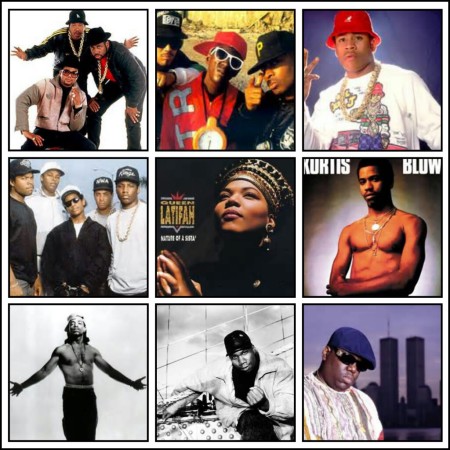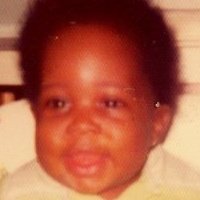It was in Dallas TX, 1979. An unassuming grade-schooler discovers an art form that would move the body, touch the heart and resonate within the soul. Already established, but continually evolving, this cultural phenomenon would inform her, entertain her and permanently alter the course of her entire life.
That musical genre became known as hip-hop, which celebrated its 40th anniversary this month. The child who encountered it was me.
On August 11, 1973, a seismic shift in pop culture was initiated by New York area-DJ Clive Campbell, AKA Kool Herc, who hosted a block party in the Bronx that debuted the practice of two turntables playing vinyl copies of the same record, which created prolonged musical bridges that allowed for lyrical rhyming. Dancers who engineered their athletic moves during those breaks became known as “B-boys,” skilled rhyme-makers became known as “MCs” and other youths expressed themselves with spray-painted artwork on buildings and tunnels. With those four elements, a worldwide movement was born.
It didn’t take long before hip-hop and its acknowledged pioneers, Kevin Donovan (Afrika Bambaataa), Joseph Saddler (Grandmaster Flash) and the aforementioned DJ Herc became living legends that inspired generations of performers who were also ready to “spin the wheels, “rock the mic” and “move the crowd.” Present-era disco grooves, old-school soul
jams, jazz and even Latin-flavored favorites formed the earliest hits, a practice known as “sampling,” and those who consistently dropped memorable lines over the catchiest musical hooks earned recognition and record label deals. 
Just like rock and roll before it, rap music had its doubters and detractors. My parents didn’t discourage my love for hip-hop, but they didn’t put stake in its long-range relevance either. Soon enough, even they couldn’t deny the infectious fun behind Sugarhill Gang’s “Rapper’s Delight,” the easygoing appeal of Kurtis Blow’s “The Breaks” and the groundbreaking impact of “The Message” by Grandmaster Flash & The Furious Five. Filled with vivid verses about the realities of street life—“rats in the front room, roaches in the back, junkies in the alley with a baseball bat”—the song rocketed up the charts and made it clear to many that this youth-driven trend was on its way up, not out. 
Over the years, hip-hop has gone global, exploding out of its New York birthplace. Early hip-hop fans fondly remember street MC battles, DJs that cut, spliced and scratched vinyl like neurosurgeons and the dance moves that practically defied the laws of science.
Calvin and I still reminisce about rap’s first love song (LL Cool J’s “I Need Love”) and what a revelation it was to hear the first rock and rap hybrid—“Walk This Way” with Run-DMC and Aerosmith.
 The first 20-odd years of hip-hop expounded on a changing world, embracing a variety of artists that offered witty and cerebral storytelling (De La Soul, A Tribe Called Quest), raucous party anthems (The Beastie Boys)
The first 20-odd years of hip-hop expounded on a changing world, embracing a variety of artists that offered witty and cerebral storytelling (De La Soul, A Tribe Called Quest), raucous party anthems (The Beastie Boys)
optimistic feminism (Salt-N-Pepa, Queen Latifah, Lauryn Hill), historical knowledge and political
power statements (KRS-One, Public Enemy), tales of poverty-based criminality and racial profiling (NWA,
The Geto Boyz) as well as the personal perspectives of those living and dying by the streets (Tupac
Shakur, The Notorious B.I.G.).
 For many, modern-day hip-hop has strayed from its roots and become unrecognizable. The sensation
For many, modern-day hip-hop has strayed from its roots and become unrecognizable. The sensation
that’s launched fashion trends, expanded vocabularies and created business empires has seemingly been reduced to bravado, bling-bling, mediocrity and shock value. But since ‘middle age’ can bring reflection and renewal, I cherish its past, share the best of today’s performers (The Roots, Lupe Fiasco) with my own children and hope
that hip-hop will continue to evolve, giving us all more anniversaries to celebrate.






3 Comments
Also coincidentally vic Willis the lead singer of the village people is from dallas.he owns part of the village people song ymca and kudos to vic for denying racist former basketball owner Donald sterling permission to use the song because of his racist comments about black people you probably agree with me on that lorrie.
May 18, 2017 at 4:43 amAlso coincidentally vocals Willis the lead singer of the village people is from dallas.he owns a quarter or a third of the village people song ymca and kudos to vic for denying racist former basketball owner Donald sterling permission to use the song because of his racist comments about black people you probably agree with me on that lorrie.
May 18, 2017 at 3:01 amHi lorrie merci beacoup for the article which means thank you very much if you don’t speak french.simce I know you have a sense of humor I’m gonna tell you something funny you probably saw the Netflix series the get down which was a fable account of how hip hop started set in 77 and 78 mostly in the south bronx of nyc.lorrie would you find it funny if during one of the hip hop parties set in 77 the djs wearing bell bottom jeans and am applejack denim hat and an iron on parliament funkadelic t shirt and he has an instrumental copies of the song fire island by the village people on his two turntables but he slows it down to make it funky by only using the drums and congas and bass and wah wah guitar part and just playing that part of the song for ten minutes straight to create a funky hip hop beat that would show like kurtis blow said rap was partly a mutation of disco.you get it lorrie lol.☺
May 18, 2017 at 2:18 am